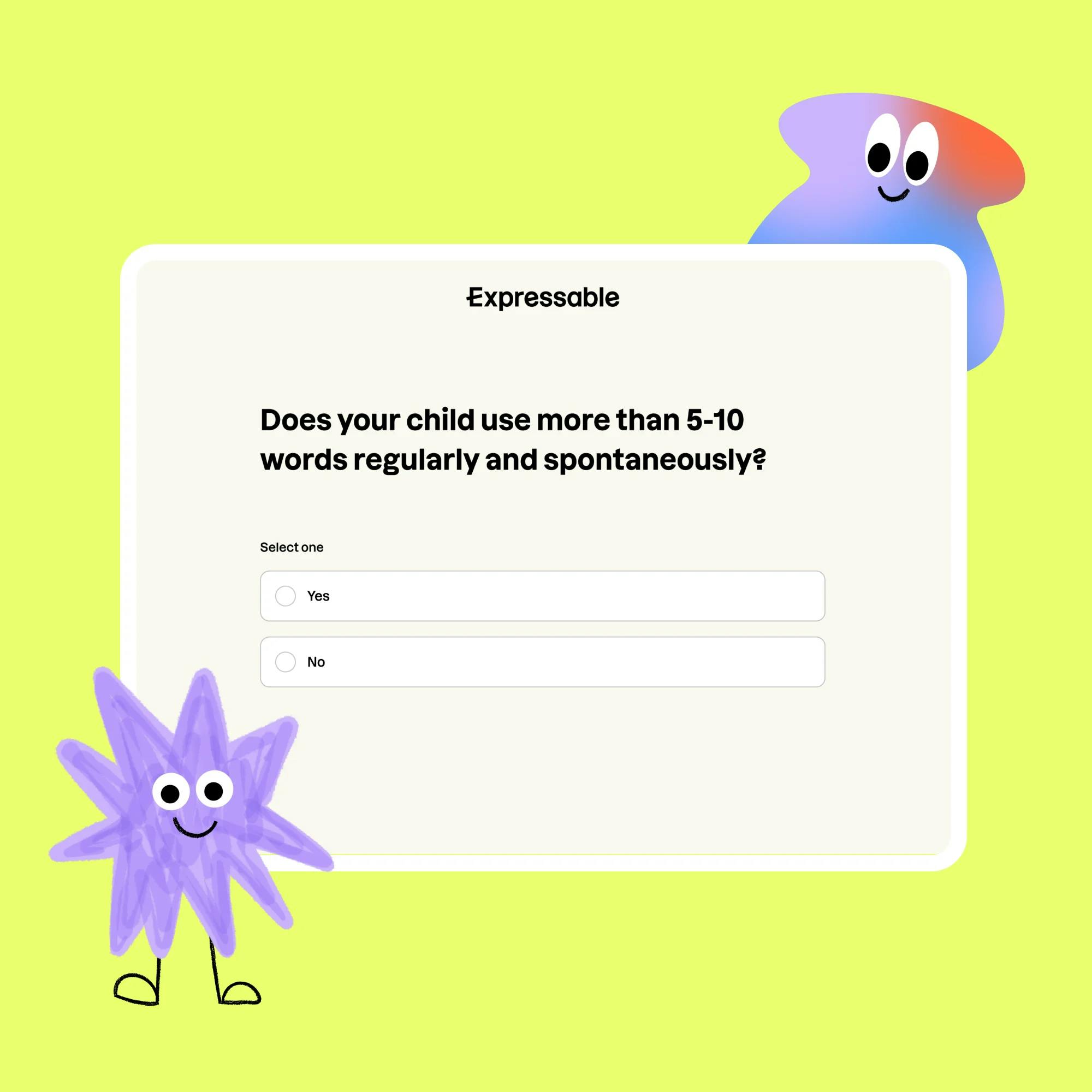
The Definitive Guide to Expressive and Receptive Language Disorders
 Leanne Sherred, M.S., CCC-SLP
Leanne Sherred, M.S., CCC-SLP
Speech and language problems can be divided into two categories: expressive language disorders and receptive language disorders.
This type of categorization helps speech therapists identify the best approach to develop speech therapy goals and care plans for the children they treat.
This article will cover all the details surrounding expressive and receptive language disorders, and what to do if you suspect your child has one.
What is a receptive language disorder?
In the broadest sense, receptive language is the comprehension of spoken language. As children grow and develop their communication skills, they must first be able to understand language in order to use it appropriately.
A receptive language disorder is an impairment of the ability to understand language. Children may struggle to grasp the meaning of what people are saying. Or they may have trouble interpreting the context of written words when reading or writing. This can make it difficult to make sense of the world around them.
What are the symptoms of a receptive language disorder?
A child with a receptive language disorder may demonstrate some of the following:
Difficulty following simple conversation
Difficulty attending to shared tasks
Difficulty identifying named objects/photos
Difficulty following directions
Difficulty understanding questions spoken to them


The importance of receptive language
Comprehension of language is critical to a child’s development. If the goal is to help a child clearly express their wants, needs, and desires, they first have to understand how to engage in conversation and understand what is said. Receptive language is the basis of all of these skills.
This is why catching a receptive language disorder early is so important! The earlier that speech therapy intervention starts, the easier it often is to correct speech or language problems.
How to increase receptive language skills
Here are some simple things you can do for your child if you suspect they have a receptive language delay:
Engage your child in conversation. Even if your child isn’t participating by talking, that’s OK! The point is to get your child paying attention to what you're saying. You can talk to your child and ask questions. Observe their eye contact and nonverbal communication to see if they are learning to engage in the conversation with you.
Ask your child to identify objects or pictures as you play or read together. Provide simple verbal models such as, “I see the dog!” or “Here is your cup.” This will help increase your child’s receptive language vocabulary.
Give your child directions to follow. Following directions is another big area of receptive language. Provide simple routine directions initially and help your child follow these directions. For example, easy one-step directions might include “Point to the dog,” or “Give me your cup.” Over time you can increase the complexity of the directions provided.
What is an expressive language disorder?
An expressive language disorder is impairment of verbal (and nonverbal expressive) communication.
A child with an expressive language disorder may be able to understand what's spoken to them, but they have trouble expressing what they need to say. They may struggle learning and using new vocabulary words, understanding how to string a series of words together into a coherent sentence, or telling a story.
While all communication problems can be difficult for children, expressive language disorder can be particularly frustrating. Often, children know exactly what they want to say, but it doesn't translate into a legible sentence once they begin talking.
Expressive language disorders are typically what family members will notice first if a child is delayed in speech, simply because it is more obvious than a receptive language disorder. However, this doesn’t mean that these disorders only present individually (more on that below).
What are the symptoms of an expressive language disorder?
An expressive language disorder can present in a variety of ways. Here are a few signs you may see in your child:
Grunting instead of using words
Difficulty gesturing to express wants/needs
Lack of a variety of consonant-vowel combinations
Limited amount of words in expressive vocabulary
Difficulty forming phrases and sentences
Difficulty with various areas of grammar
Poor ability to answer questions


The importance of expressive language
It doesn’t take a lot of explanation to understand the importance of having strong expressive language skills. Being able to clearly communicate thoughts and feelings is a need we all have! If this is impaired, it can create many challenges for a child.
Poor self-esteem and frustration can occur when an expressive language disorder is present. Safety is also a concern if a child cannot express details about an event, answer questions appropriately, or tell basic information like their name and phone number.
These are all reasons we want to catch any language disorder as quickly as possible!
How to increase expressive language skills
If your child struggles with expressive language skills, there are ways you can to help.
For children who aren’t yet talking, target simple imitation of early sounds, like /m/, /b/, /p/, /d/, and /t/. Imitation means that you pronounce these sounds for your child, and practice having them repeat the sounds back to you. You can also work on imitation of simple environmental sounds, such as the sounds of trains and cars, animals, a vacuum, or running water.
After this stage, you can move on to things like imitation of single words, and eventually two- and three-word phrases.
For children who are using simple phrases, work on complete sentences. You can target this in various ways, such as focusing on appropriate sentence structure. Similarly, grammar-related goals like using correct verb tenses, using plural /s/ appropriately, and using pronouns all fall under expressive language.
Visit our YouTube page for a series of videos focused on teaching various types of imitation, along with pronoun usage.


Can an expressive and receptive language disorder exist together?
It's important to note that while these types of language disorders can exist individually, they frequently exist together. We refer to this as a mixed receptive-expressive language disorder.
Sometimes, if a child’s receptive language is delayed, that can affect their expressive language skills. There can be deficits in both areas.
However, simply because a child is delayed in expressive skills doesn't mean that they struggle with comprehension abilities.
Clear as mud, right? The bottom line is this: No two children are the same! There are different areas of strengths and weaknesses in every child. That’s why it is vital for a qualified professional like a speech therapist to help determine where a child is proficient, and where they need some extra help and instruction. If you would like information on communication milestones by age, check out these articles:










